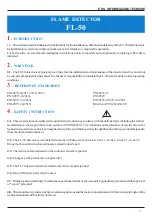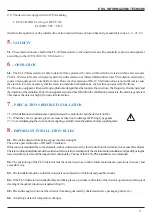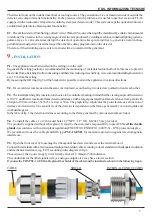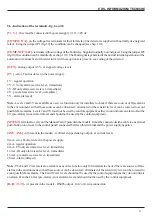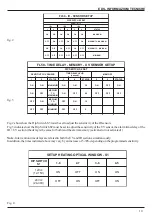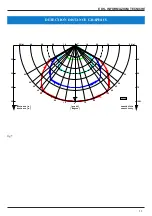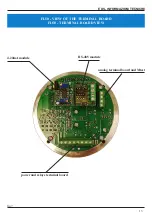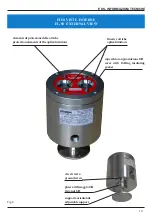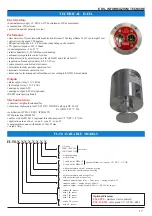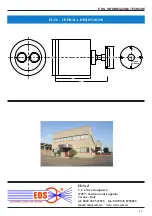
EDS - INFORMAZIONI TECNICHE
9
and performs the activation of IR and UV signals to simulate the flame for a duration of about 120 seconds.
After this time the detector must go to Alarm and the analogue output (OUT) must indicate 5V (or 20mA).
If the Test has a negative result the Fault relay is de-energized (if normally energized) and the analogue output (OUT) will
indicate 0 V.
12.2 - Automatic Test
The FL50 detector periodically performs an Automatic Test every 24 hours.
If the Automatic Test is successful, no output signal is generated.
If the Test has a negative result no Alarm signal is generated but a Fault signal is generated.
This signal remains active until the cause of the Fault is eliminated
During the Test the detector generates an IR signal and a UV signal that simulate the flame to verify the correct response
of the sensors and associated electronics.
The test lasts about 120 seconds.
During the Automatic Test, the Alarm output relay and the analogue output remain blocked.
13
-
FUNCTIONAL TESTING WITH TEST LAMP
For operational testing in the field of flame detectors EDS with infrared sensors IR and ultraviolet UV, we recommend the use
of the
FLT-20
Portable Test Lamp. This instrument is suited for testing flame detectors installed in explosion-proof environments
with risk of explosion. In these environments, the flame detectors can not be tested with the use of flames or similar devices.
FLT-20 is explosion-proof Ex-d IIC T6 ATEX certified and therefore can be used in potentially explosive environments classified
as Zone 1 - 2 - 20 -21 - 22.
It should be remembered that in environments with danger of explosion it is absolutely not necessary to carry
out a functional test by lighting a flame.
14
-
MAINTENANCE
14.1
- The detector's optical windows must be periodically cleaned to ensure regular operation. The frequency of this
operation must depend on the environmental characteristics. Use an antistatic cloth or a damp cloth to remove the dust.
Use a cloth dampened with slightly soapy water to remove any deposits.
fig.1
E
C
N
A
T
S
I
D
N
O
I
T
C
E
T
E
D
-
0
5
L
F
E
N
O
I
Z
A
L
E
V
I
R
I
D
A
Z
N
A
T
S
I
D
-
0
5
L
F
e
m
a
l
F
f
o
e
p
y
T
a
m
m
a
i
F
i
d
o
p
i
T
]
m
[
e
c
n
a
t
s
i
D
n
o
i
t
c
e
t
e
D
]
m
[
e
n
o
i
z
a
l
e
v
i
r
i
d
a
z
n
a
t
s
i
D
e
n
i
l
o
s
a
G
a
n
i
z
n
e
B
0
5
e
n
a
h
t
p
E
-
N
o
n
a
t
p
E
-
N
0
5
e
n
e
s
o
r
e
K
e
n
e
s
o
r
e
K
5
3
-
0
3
l
h
o
o
c
l
A
l
y
h
t
E
o
c
i
l
i
t
E
l
o
o
c
l
A
6
2
-
2
2
l
o
n
a
h
t
E
o
l
o
n
a
t
E
6
2
-
2
2
l
o
n
a
h
t
e
M
o
l
o
n
a
t
e
M
6
2
-
2
2
e
n
a
h
t
e
M
o
n
a
t
e
M
8
1
-
5
1
)
m
c
0
9
e
r
i
f
e
m
u
l
p
(
r
e
p
a
P
)
m
c
0
9
o
t
t
e
g
(
a
t
r
a
C
8
1
-
5
1
)
2
m
c
0
0
0
1
t
e
g
r
a
t
(
n
e
g
o
r
d
y
H
o
i
l
g
a
s
r
e
b
(
o
n
e
g
o
r
d
I
)
2
m
c
0
0
0
1
8
1
-
5
1



